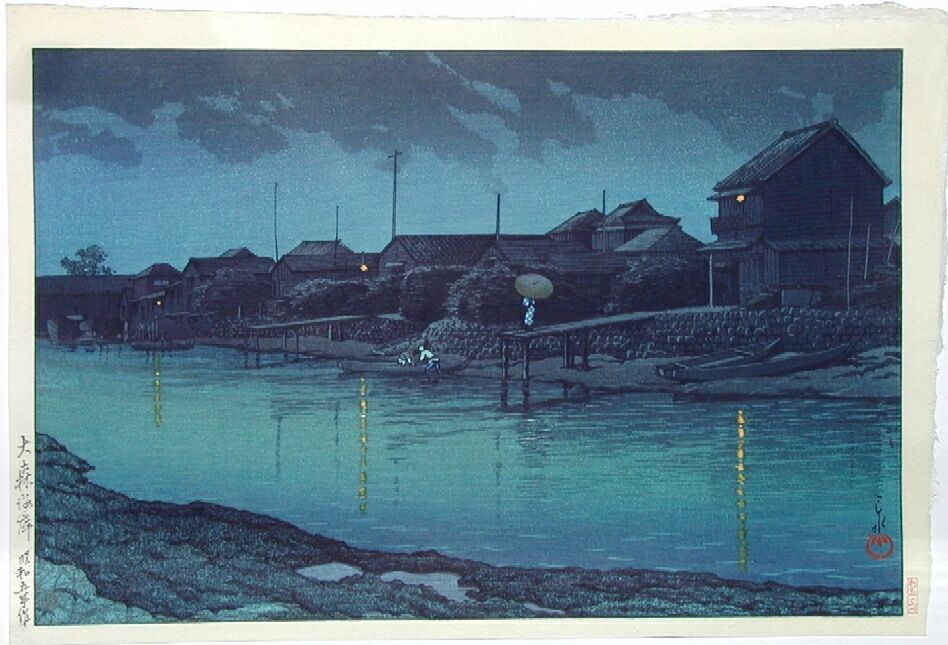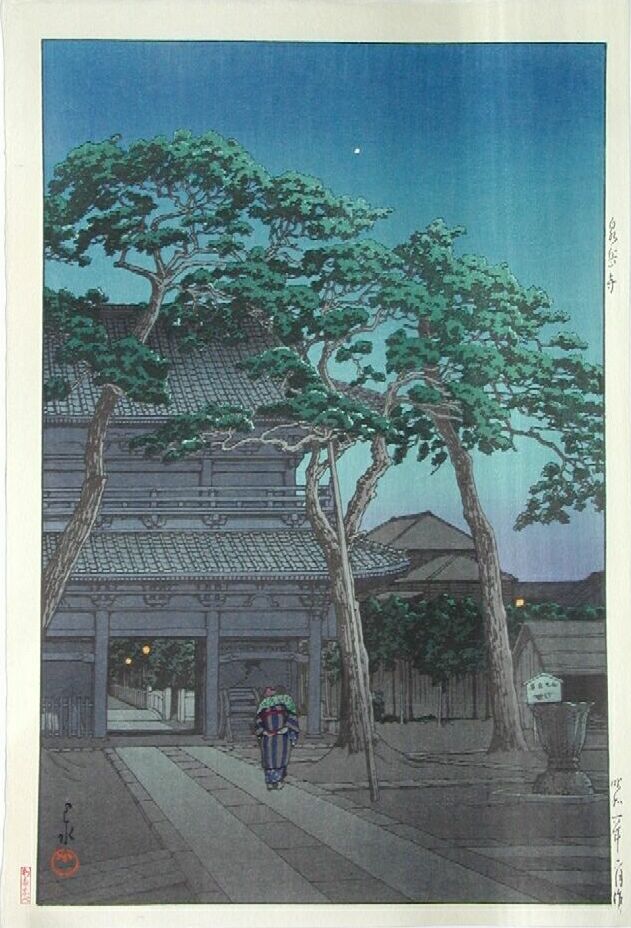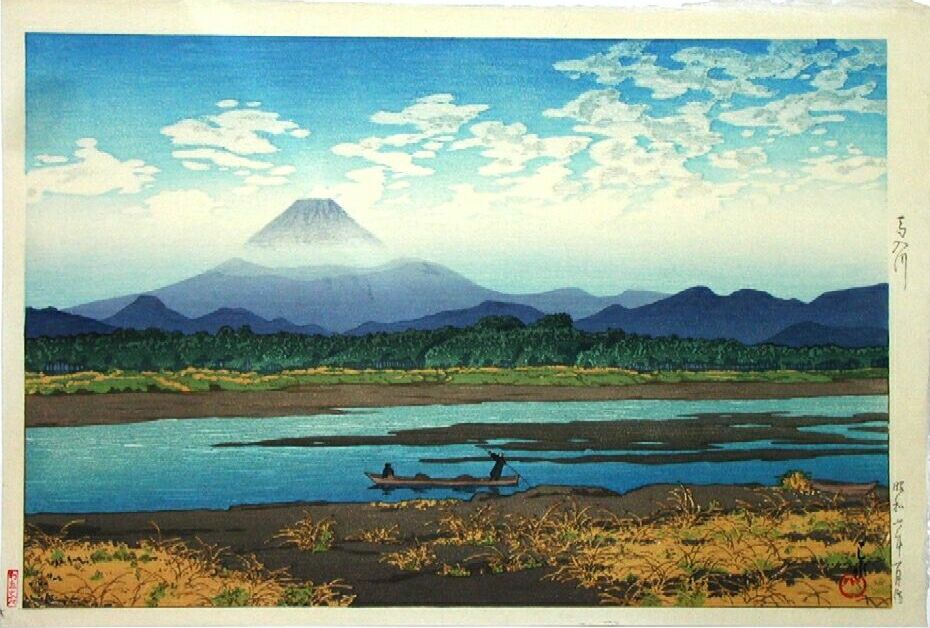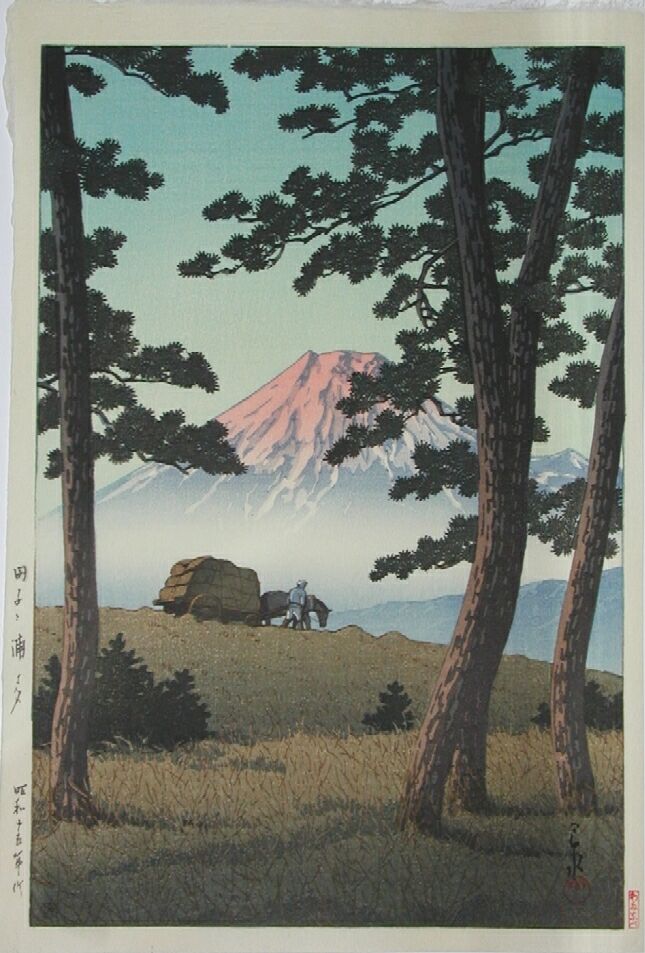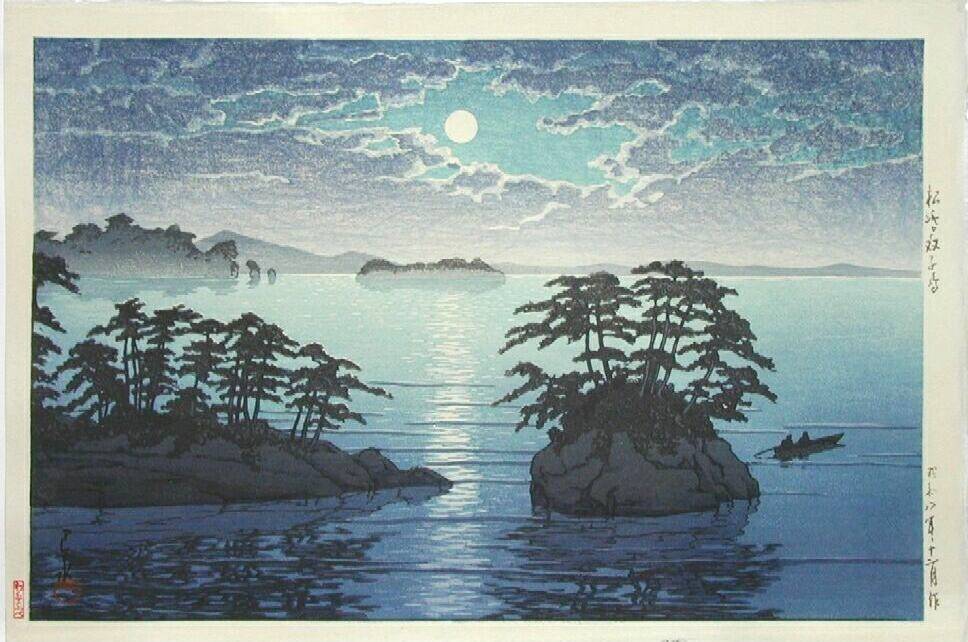The "location comments" provided below are offered through the eyes of Dr. Andreas Grund, a full-time and now 13-year resisdent of Tokyo.
|
|
Narazaki N168 "Omori Beach" 1930 "Omori" (literally translated as "Great Forest") once was small suburb in the southwest of Tokyo, nowadays halfway between Shingawa and Kawasaki, close to the Haneda Airport. The romantic scenery as shown on the print completely (and sadly) disappreared. Today, Ohmori is the typical mixture of residential areas with small shopping alleys and industry. |
|
Watanabe H** |
|
|
|
Narazaki N172 "Sengaku Temple" 1931 This temple, not far from Shinagawa Station in the south of Tokyo, still exists today. It is most famous for its graveyard of the 47 Ronin, who are buried there after they revenged their master and committed suicide. For those who want to know the full story, see "The 47 Ronin." |
|
Watanabe H** |
|
|
|
Narazaki N174a "Mairi River" 1931 I (Andreas) didn't know until today that this river exists, can't comment at all.... (Remember, even for a full-time, 13-year resisdent of Tokyo, this--one of the largest cities in the world--remains a large and complex area. |
|
Watanabe H** |
|
|
|
Narazaki N176 "Evening at Tago Bay" 1940 This is a typical view of majestic Mt. Fuji. Additional artists, among them Tsuchiya Koitsu, also sketched Fuji-san from this location for a later print. |
|
Watanabe H** |
|
|
|
Narazaki N211 "Twin Islands at Matsushima" 1933 North of Sendai, at the Pacific Ocean, we find an area called Matsushima or "Pine Islands." It is characterized by hundreds of small and tiny islands, many of them with pine trees. Many further shin hanga artists have made prints of these beautiful islands, e.g., Kasamatsu and Koitsu, to name only a few. |
|
Watanabe H** |
|
NOTE: Any of the above five prints are available for sale--INQUIRE.
(c) September 2002, Andreas Grund and Thomas Crossland
